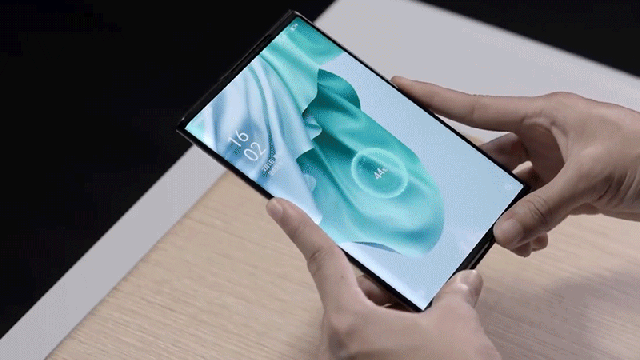The tantalising promise of true wireless charging — not just plopping your phone down on a charging pad — feels even more real as companies like Xiaomi, and now Oppo, demonstrate prototypes of their respective approaches to the technology. Although if Oppo’s wireless charging ever reaches consumers, your phone might still feel as restricted as it does with a cable attached.
Through the company’s Weibo account (a Chinese microblogging website not unlike Twitter), Oppo shared a video to coincide with Mobile World Congress, Shanghai, which gets underway today. The video features the Oppo X 2021 rollable concept smartphone, first revealed last November with a flexible OLED display that rolls to stretch and shrink the size of its screen, being wirelessly charged on a pad that doesn’t actually require the device to be sitting directly on the charging coil.
[referenced id=”1530683″ url=”https://gizmodo.com.au/2020/11/the-oppo-x-2021-rollable-concept-phone-looks-like-it-stretches-reality/” thumb=”https://gizmodo.com.au/wp-content/uploads/2020/11/19/s2udf0vzgymdzsggbxvl-300×169.gif” title=”The Oppo X 2021 Rollable Concept Phone Looks Like It Stretches Reality” excerpt=”When it comes to delivering a big-screen experience in a package that still fits in a purse or pocket, rollable phones might be an even better solution than foldable handsets like the Samsung’s Galaxy ZFold2. However, with its new Oppo X 2021 concept, it looks like Oppo has figured out…”]
The wireless charging technology currently available to consumers relies on tightly wound coils of wire located in the charger as well as inside devices that support it. When placed near each other, electricity flowing through the charging coil induces a current in the device’s coil allowing its battery to charge without a cable being physically inserted. But the coils need to be placed very close to each other for this phenomenon to occur, making it hard to use a device while it’s charging. It’s the reason Apple has added the MagSafe feature to its iPhone 12 lineup, ensuring a wireless charger stays attached to the devices (and the charging coils remain aligned) even if the phones are picked up and used.
It’s convenient, but not as convenient as true wireless charging, which companies like Ossia have been demonstrating at CES for a few years now. The ideal is a device that starts charging when it simply comes near a wireless charger, which so far have been demonstrated to have a range about the size of the average room in your home. Last month Xiaomi announced its own wireless charging system called “Mi Air Charge Technology,” which functions similar to Ossia’s Cota wireless technology, although neither solutions are available to consumers yet.
Oppo appears to be taking a different approach than either Xiaomi and Ossia. The Oppo X 2021 doesn’t need to make physical contact with the wireless charging pad to draw up to 7.5-watts of power (a little more than the iPhone’s tiny cube charger delivers), but the company’s Wireless Air Charging doesn’t allow users to walk around a room either.
[referenced id=”929903″ url=”https://gizmodo.com.au/2016/01/an-iphone-charging-in-midair-is-the-coolest-ces-demo-ive-ever-seen/” thumb=”https://gizmodo.com.au/wp-content/uploads/2016/01/07/hamg266ufeqfzfa34f6w-300×169.jpg” title=”An iPhone Charging In Midair Is The Coolest CES Demo I’ve Ever Seen” excerpt=”Like calling those two-wheeled, self-balancing monstrosities hoverboards, the term ‘wireless charging’ has been incorrectly used to describe many technologies that really aren’t. But for the first time ever, yesterday I held an iPhone in my hand that was charging without a single cable connected to it, and I was wowed.”]
The phone can be picked up and moved around — the charging doesn’t seem to be dependent on its orientation — but according to the Verge, the distance is limited to about 10 centimetres. The video Oppo shared on Weibo also seems to indicate that a device needs to be kept over the charging pad the entire time. It seems slightly more convenient than the limitations of an induction charger, but not as convenient as Apple’s MagSafe solution, which makes a device easier to use while it’s being charged.
There’s no timeline on when Oppo’s Wireless Air Charging might be made available to consumers — if ever — depending on what the feedback is like during Mobile World Congress, Shanghai. But while it’s a step in the right direction, we’re more inclined to wait for Ossia and Xiaomi to deliver their solutions, which offer more freedom and flexibility.
